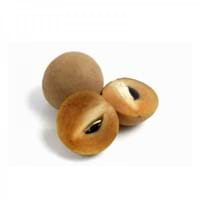Health Benefits
Anti depressant, Cancer prevention, Heart care, Increases metabolic rate, Prevents constipation
Anti-inflammatory properties, Arthritis treatment, Regulates Blood Sugar, Unknown
General Benefits
Anti oxidant properties, Controls blood pressure, Digestive aid, Eye care, Helps in weight loss, Strengthens bones
Boosts immune system, Controls blood sugar levels, Digestive aid
Skin Benefits
Anti-aging benefits, Reduces wrinkles, Skin rejuvenation, Skin revitalization, Treatment of acne, Treatment of dark spots
Nourishes skin, Protects skin from oxidative stress
Hair Benefits
Promotes longer and healthier hair, Regulates hair growth
Prevents hair loss, Promotes longer and healthier hair, Regulates hair growth
Allergy Symptoms
Abdominal pains, Anaphylaxis, Breathing difficulty, Coughing, Decrease in blood pressure, Diarrhea, Eczema, Fainting, Hives, Lightheadedness, Nausea, Runny nose, Sneezing, Swelling of mouth, tongue or lips, Vomiting, Wheezing
Asthma, Red rash, Swelling of mouth, tongue or lips
Side Effects
Affects blood glucose levels, Decrease in blood sugar levels, Allergic reaction
Diarrhoea, Vomiting
Best Time to Eat
As a snack in the late afternoon, Eat the fresh ones, avoid mixing with any other foods, don't eat after meal., Morning time (before lunch)
As a snack in the late afternoon
Vitamin B5 (Pantothenic Acid)
Vitamin C (Ascorbic Acid)
Vitamin E (Tocopherole)
Not Available
Vitamin K (Phyllochinone)
Not Available
Lutein+Zeaxanthin
Not Available
Phytosterol
Not Available
Calories in Fresh Fruit with Peel
Calories in Fresh Fruit without Peel
Not Available
Not Available
Calories in Juice
Not Available
Calories in Jam
Not Available
Calories in Pie
Not Available
Varieties
Pink Lemonade, Bluecrop, Bluejay, Blueray, Bonus, Duke, Elliott, Jersey, Nelson, Northland, Patriot, Sierra, Spartan, Northcountry, Northsky and Premier and Climax
Bush Table Queen, Heirloom Table Queen, Festival Hybrid, Early Acorn Hybrid, Table Ace, Ebony and Cream of the Crop
Seedless Variety
No
Not Available
Color
Blue, Indigo
Dark green, Green-yellow, Orange green
Inside Color
Greyish-white
Not Available
Origin
North America
Central America, North America, Unknown
Soil Type
Porous, Well-drained
Well-drained
Climatic Conditions
Cold
Cold, Sunny
Facts about
- National blueberry month is July as blueberries are harvested in July.
- They are the official berries of Nova Scotia, Canada.
- Blueberries are used as natural food color and can protect you from memory loss.
- It was named as Acorn Squash for its resemblance to a large ribbed acorn.
- It is said that squash was being grown in Mexico as long as 10,000 years ago.
- It was the first food cultivated by native American Indians.
Spirits
Yes
Not Available
Cocktails
Yes
Not Available
Top Producer
United States of America
China
Other Countries
Canada, Germany, Netherlands, Poland
Egypt, India, Iran, Italy, Mexico, Russia, Turkey, Ukraine, United States of America
Top Importer
United States of America
UAE
Botanical Name
Vaccinium myrtillus
Cucurbita Pepo
Synonym
Not Available
Winter Squash
Subkingdom
Tracheobionta
Tracheobionta
Division
Magnoliophyta
Magnoliophyta
Class
Magnoliopsida
Magnoliopsida
Subclass
Dillenhidae
Dillenhidae
Order
Ericales
Cucurbitales
Family
Ericaceae
Cucurbitaceae
Genus
Vaccinium
Cucurbita
Species
V. myrtillus
Pepo
Generic Group
Heath
Not Available
Difference Between Blueberry and Sapota
We might think that Blueberry and Sapota are similar with respect to nutritional value and health benefits. But the nutrient content of both fruits is different. Blueberry and Sapota Facts such as their taste, shape, color, and size are also distinct. The difference between Blueberry and Sapota is explained here.
The amount of calories in 100 gm of fresh Blueberry and Sapota with peel is 57.00 kcal and 40.00 kcal and the amount of calories without peel is Not Available and Not Available respectively. Thus, Blueberry and Sapota belong to Low Calorie Fruits and Low Calorie Fruits category.These fruits might or might not differ with respect to their scientific classification. The order of Blueberry and Sapota is Ericales and Cucurbitales respectively. Blueberry belongs to Ericaceae family and Sapota belongs to Cucurbitaceae family. Blueberry belongs to Vaccinium genus of V. myrtillus species and Sapota belongs to Cucurbita genus of Pepo species. Beings plants, both fruits belong to Plantae Kingdom.









